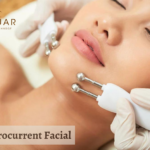
A chemical peel is a procedure in which a chemical solution is applied to the skin to remove the top layers, revealing the more youthful skin underneath. Chemical peels can reduce or improve fine lines and wrinkles, acne, scars, uneven skin coloring and other skin imperfections. Different chemicals determine the depth of your peel and type of skin condition treated.
There are a number of reasons people may get chemical peels. They may be trying to treat a variety of things, including:
- wrinkles and fine lines
- sun damage
- acne scars
- hyperpigmentation
- scars
- melasma
- uneven skin tone or redness
Yeah! You got it right! Chemical peel is good for your skin! Not only are they important in maintaining the health of your skin, but they are also one of the most effective facial treatments there is. It can be used to correct above skin issues. Another wonderful asset of chemical peeling is that there is a peel available for most every skin type.
A lot of people are intimidated by chemical peels. And while there really isn’t a need to be, there are a few surprising things one needs to know to ensure the best possible experience and results, according to peel expert, Kerry Benjamin.
Photo courtesy of Google
1.Numerous Factors Determine the Strength of a Peel
Like most people, you probably judge the strength of a peel on the percentage of active ingredients. The formulation, acid, pH, as well as the percentage, dictate the strength of a peel. There can be pain and downtime—but there are medical-grade peel options today, with a low pH, that are medium-depth peels and are not highly invasive or painful and don’t require considerable downtime.
2.Actual Peeling Isn’t Always a Sign That the Treatment Is Working
It seems kind of scary to have your skin flaking off, but did you know that you don’t always have to actually peel after a peel to see the benefits. Surprising, isn’t it? According to Benjamin, the visible peeling is just a side effect. The actual ‘peeling’ is happening at the cellular level. She explains that this is the reason why most people will stop experiencing visible flaking after a few peels.
Typically after a peel, or a series of peels, the skin should look more glowing, pores tighter, and the skin tone more even.”
3.You Don’t Have to Be an Adult to Use Peels
If you thought peels were only for those with wrinkles, you thought wrong. Peels with salicylic acid, can be used to effectively treat acne at any age. They exfoliate the top layer of your skin, causing natural cell turnover to speed up, and help minimize oil production, unclog pores, and reduce the formation of blackheads and whiteheads.
4.Peels Can Be Gentle
Certain peels can actually be quite gentle and effective for those with sensitive skin. According to the expert, Medium depth peels cause little to no discomfort, have minimal visible peeling, and cause your skin to look glowing after the treatment. Phenol peels, on the other hand, go deep into the dermis and require you to undergo general anesthesia—these are the ones that need to be performed by a dermatologist.
5.You Shouldn’t Workout After a Peel
Exercising for 24 hours after your peel disrupts the healing process and encourages inflammation. So, If you were planning on a workout after your peel, you might want to reconsider.
6.You Shouldn’t Use a Retinol If You’re Using a Peel
According to Benjamin, Post-treatment, clients should use mild products without any harsh acids or vitamin A for five to seven days. Patients should keep their skin moisturized and apply ample SPF, as well as avoid the sun during this period.
7.Your Skin Care Professional Should Prepare your Skin prior to applying the Peeling Solution
You want the solution to be applied directly to your skin so you can get even results. They should exfoliate your skin with Desuar Spa to remove any loose, dead skin cells, first.






1 Comment
[…] Chemical peels– After the summer you may be left with more sun-damaged skin, age-spots, and wrinkles. Chemical peels are incredible for so many skin concerns. Lines and wrinkles, age spots, blemishes, Acne scarring and Pigmentation to name but a few. However, practitioners generally agree that the best time of year to get skin peels is autumn/winter. Chemical peels use a chemical reactive solution to remove the undesirable layer of skin. A chemical peel sounds like a harsh treatment, but in reality it can greatly vary from gentle to strong depending on the type of solution used for your skin’s needs. […]
Comments are closed for this article!